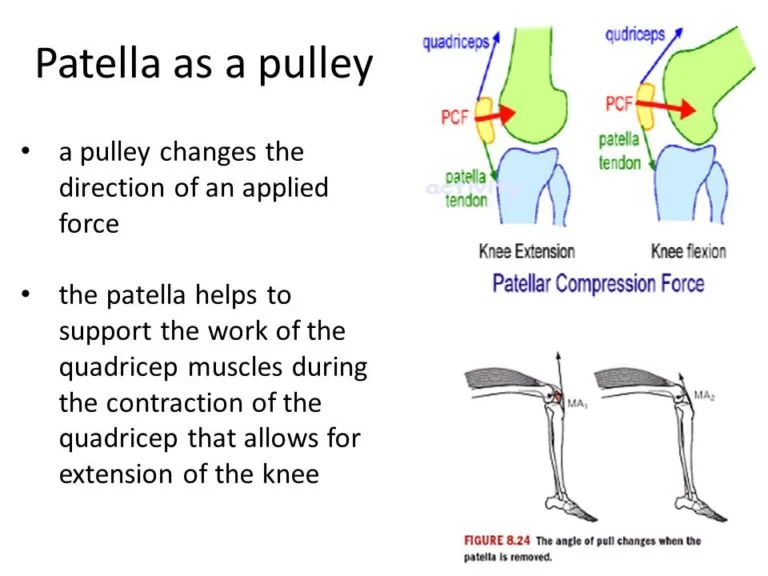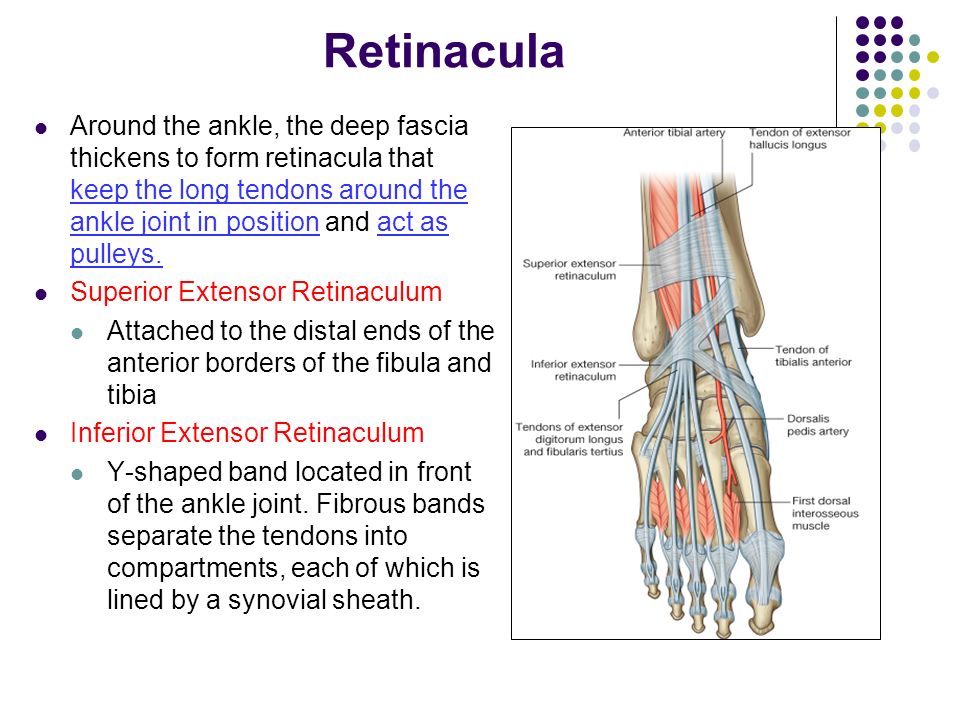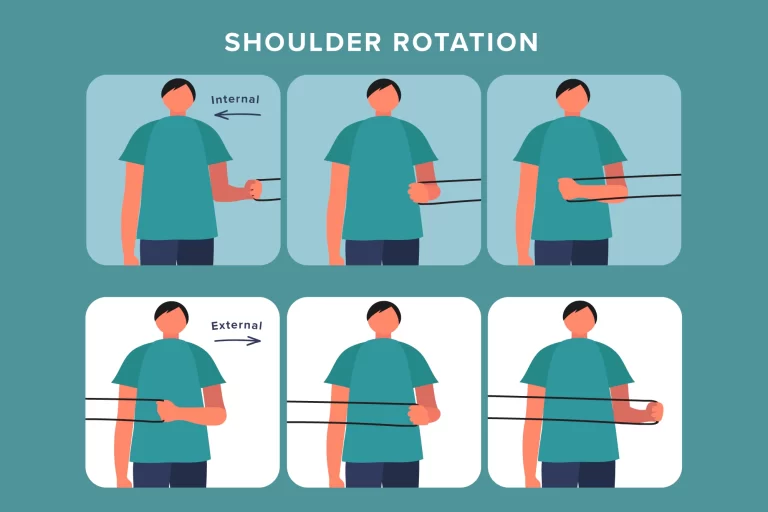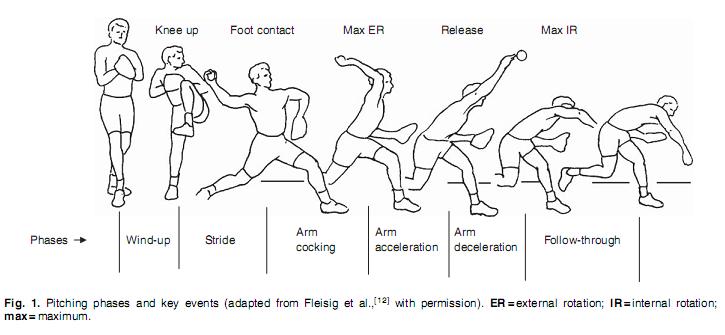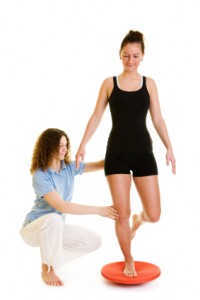PULLEYS USE IN BIO-MECHANICS
Pulleys play a significant role in biomechanics, particularly in the context of human movement and the musculoskeletal system. They are mechanical devices consisting of a grooved wheel and a rope, cable, or belt that runs along the groove. Pulleys are designed to change the direction of a force and provide mechanical advantage, making it easier to move heavy loads or transmit force across a distance.
In biomechanics, pulleys are often found in various anatomical structures, such as tendons, ligaments, and the skeletal system, where they function as biological pulley systems.
Pulleys play a significant role in biomechanics, particularly in the context of human movement and the musculoskeletal system. They are mechanical devices consisting of a grooved wheel and a rope, cable, or belt that runs along the groove. Pulleys are designed to change the direction of a force and provide mechanical advantage, making it easier to move heavy loads or transmit force across a distance.
In biomechanics, pulleys are often found in various anatomical structures, such as tendons, ligaments, and the skeletal system, where they function as biological pulley systems.
Table of Contents
DEFINITION
A pulley is a simple mechanical machine and consists of a wheel that turns readily on an axle.
These are used to alter the direction of a force. The pulley block is fixed and the rope which passes round the wheel is attached to the weight at one end and the effort is applied at the other.
Type of Pully
There are three types of pulleys:
1) A single fixed pulley.
2) A single movable pulley.
3) Pulley combination.
- A single fixed pulley: It changes the direction of the force acting on it and its magnitude remains the
same on either side of the pulley rope irrespectively of the angle of pull of the force.
It’s a mechanical advantage is. - A single movable pulley: It acts as a second-class lever. Its mechanical advantage is (2) as it magnifies
force. - Pulley combination: There are many combinations and the simplest one is a combination of one fixed and one
movable pulley as used in the Guthrie-Smith suspension frame.
The mechanical advantage of the pulley combination will be equal to the number of strands supporting the movable
pulley.
Anatomical Pulleys:
- In the human body, in most cases, the pulley is replaced by a bone, cartilage, or ligament and the cord is
replaced by a muscle tendon.
The tendon is lubricated in a manner so that it may easily slide over the pulley.
Classification of anatomical pulleys
There are four classes of pulleys, the first three of them are examples of fixed pulleys, and the fourth one
is an example of a movable one.
Class I:
- An improved muscle action comes from the muscle-tendon passing over an external support, the external support
serving as pulley. - e.g. The presence of the patella ( the pulley) improves the efficiency of the quadriceps muscle as the pulley
will increase the angle of insertion of the patella ligament into the tibial tuberosity
Class II
The action of the muscle at the joint is altered because of the pulley:
- The pulley is a bone :
- e.g. the lateral malleolus of the fibula acts as a pulley for the peroneus longus muscle.
If it was not for the malleolus, this muscle instead of passing behind the lateral malleolus to be inserted
in the base of the first metatarsal and to produce ankle plantar flexion and eversion, it would have produced
ankle dorsiflexion and eversion because of its passage in front of the ankle joint.
- The pulley is cartilage :
e.g. The trochlea of the eye allows the superior oblique muscle of the eye when it passes over it to
rotate the eye obliquely. Without this pulley, the muscle would have little effect on the eye. - The pulley is a ligament:
e.g. the flexor retinaculum of the hand acts as a pulley for the flexors of the fingers to prevent its
bowstring. Without this action, these muscles will not be effective in moving these joints.
Class III:
The joint serves as the pulley. The size of the epicondyles of the femur gives the gracilis tendon a favorable
angle of insertion as the tendon inserts on the tibia. Or the middle part of the deltoid as it passes over the
shoulder joint.
Class IV:
The muscle acts as a pulley the muscle is its own pulley e.g. as the biceps muscle increases in size,
its angle of insertion will increase.
The muscle underneath acts as pulley for another muscle, which passes over it e.g. brachialis muscle.,
will raise the biceps giving it a better angle of insertion. For this to be effective, the overriding ms.
must not have the same insertion as the bulky ms.
Wheel & Axle
It is a machine that consists of a wheel attached to a central axle about which it revolves.
Forces may be applied to the wheel either at the rim or at the axle.
Class I:
- The force is applied at the rim it resembles a second-class lever & magnifies force at the expense of speed &
distance. Its mechanical advantage is more than. - The larger the diameter of the wheel the greater the magnitude of force. The turning effect of the wheel is
the product of the force & radius. In this class, the resistance is applied close to the axle. - Class II:
- The effort is applied to the axle and the resistance is applied to the rim of the wheel. It resembles a third-class lever and its mechanical advantage is less than one.
- This class favors speed and range at the expense of force.
Most of the examples of the wheel and axle in the body are of the second class, however, both kinds are represented. - Examples of wheel and axle:
- When taking a cross-section of the upper trunk, the rib cage represents the wheel and the spinal column represents the axle.
- In Class I Wheel and Axle,
the oblique abdominal muscles exert their force on the rim of the wheel (the ribs) and the small rotators of the vertebral column (multifidus) provide resistance to the axle (vertebral column) during the rotation of the rib cage. - In Class II Wheel and axle,
the effort is applied by the small rotator of the spine to the axle and the resistance is provided by the thoracic cage. - Also, a cross-section of the arm or thigh presents the characteristics of a wheel and axle.
- The long bone will be the axle and the surrounding tissues will be the wheel.
- Rotation of the limb about its mechanical axis constitutes a movement of the wheel and axle.
The effort is provided by the muscles producing the rotation and the resistance by the antagonistic
muscles or external resistance. In this arrangement, the resistance is applied to the axle from the same
distance as the effort.
EXAMPLES OF PULLEYS
1) Flexor tendon pulley system
- 1) Flexor tendon pulley system consists of annular ligaments of the fingers or A pulleys, and cruciate pulleys.
Together, these form a fibro-osseous tunnel on the palmar aspect of the hand through which passes the deep
and superficial flexor tendons.
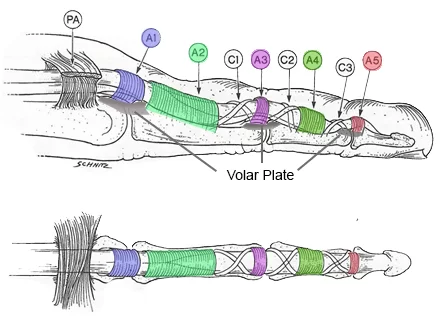
2) PATELLA ACTS AS A PULLEY
Our kneecap, the patella bone, is embedded into the quadriceps, on top of the knee joint, as it moves down to the lower leg. The top of the bone acts as the pulley and the quadriceps muscle is the rope that helps to extend the lower leg.
